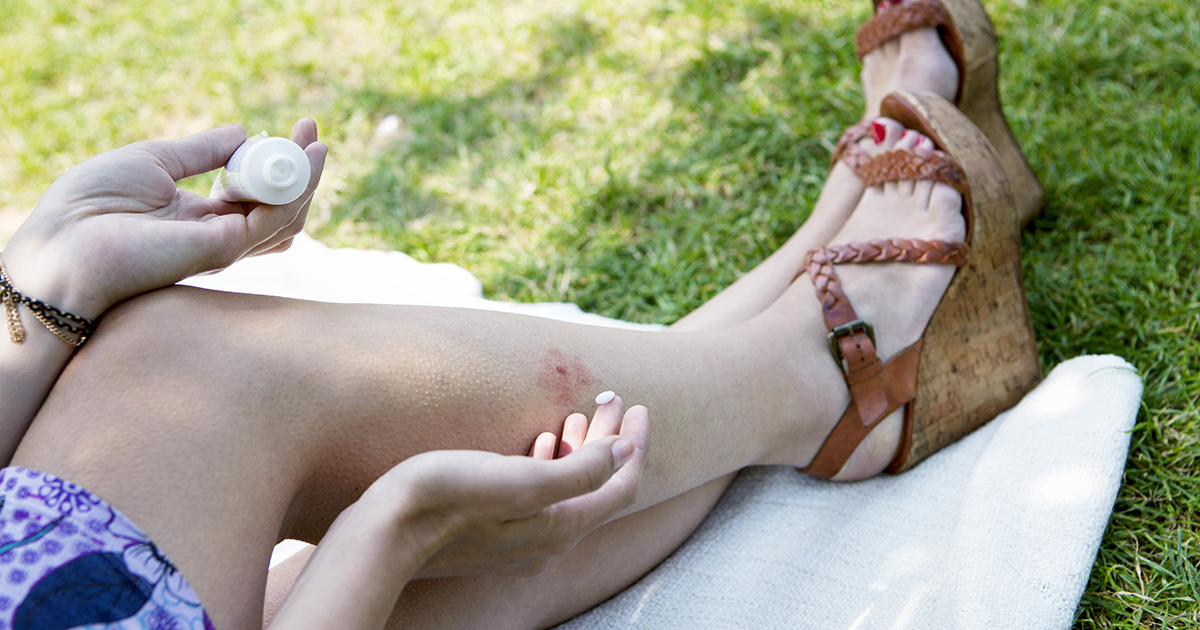
When bug bites go beyond bothersome
Summertime means plenty of opportunities for outdoor leisure, but time spent in the fresh air can become problematic when you add insects to the equation.
“The summer time does bring out more bugs,” said Bobby Lucia, APRN with OSF OnCall Urgent Care. “We have the stingers – bees, wasps, hornets – and then we have the ground bugs – ticks, mites, mosquitoes.”
When those bugs bite, you can usually treat yourself at home, said Lucia. But when those bug bites go beyond the pesky itch, it’s important to know what to look for and when it might be time to seek care.
Signs and symptoms
The most common reaction to an insect sting is a local reaction, which has symptoms that do not extend beyond the bite site. Symptoms include:
- Pain
- Swelling
- Redness
- Itching
- Warmth
- Hives
Many of these symptoms can be managed at home, but one bug bite you should always have evaluated is a spider bite. These bites are rare, said Lucia, but what appears to be a spider bite could actually be a treatable skin infection that needs to be addressed.
If you want assistance treating a non-emergency bite or sting or want to get your bite evaluated, you can get quick help using one of our convenient urgent care options.
Serious symptoms that can indicate the possibility of a life-threatening reaction include the following:
- Tightness in the throat or chest
- Breathing problems or wheezing
- Nausea or vomiting
- Dizziness or fainting
- Anxiety and/or a racing heart
- Hives over a large part of the body
- Swelling in the face
These could be signs of anaphylaxis, said Lucia, and if you’re experiencing them you should call 911 immediately to receive emergency care.
Treatment for bites and stings
Home care is sufficient for most bites and stings. Tips include:
- Remove the stinger by gently scraping across the site with a blunt-edged object, such as a credit card, a dull knife or a fingernail. Do not try to pull it out, as this may release more venom.
- Wash the area well with soap and water.
- Apply a cold or ice pack wrapped in a thin cloth to help reduce swelling and pain.
- If the sting occurs on an arm or leg, elevate the area to reduce swelling.
- To reduce the pain and itching, apply a paste of baking soda and water and leave it on for 15 to 20 minutes. You could also apply a wet tea bag.
- Apply an antihistamine or corticosteroid cream or calamine lotion.
- Take acetaminophen for pain.
- Take an over-the-counter antihistamine, if approved by your health care provider.
- Always watch the person closely for the next hour for more serious symptoms.
“If these remedies do not work over a period of 3-4 days – or if you have a change in vitals signs such as fever, shortness of breath or increased pain – an urgent care visit is warranted,” said Lucia.
Preventing bug bites
To reduce the possibility of insect stings:
- Avoid using perfumes and other scented items.
- Avoid brightly colored clothing.
- Do not go outside barefoot. Avoid wearing sandals in the grass.
- Use insect repellent.
- Avoid locations where hives and nests are present. Have the nests removed by professionals.
- If an insect comes near, stay calm and walk away slowly.